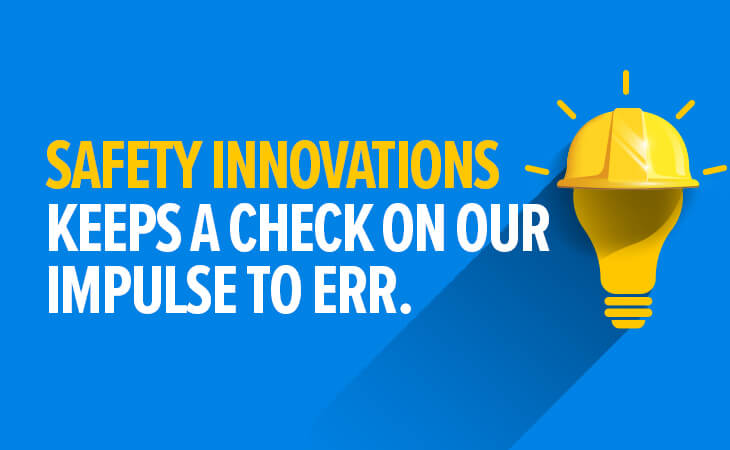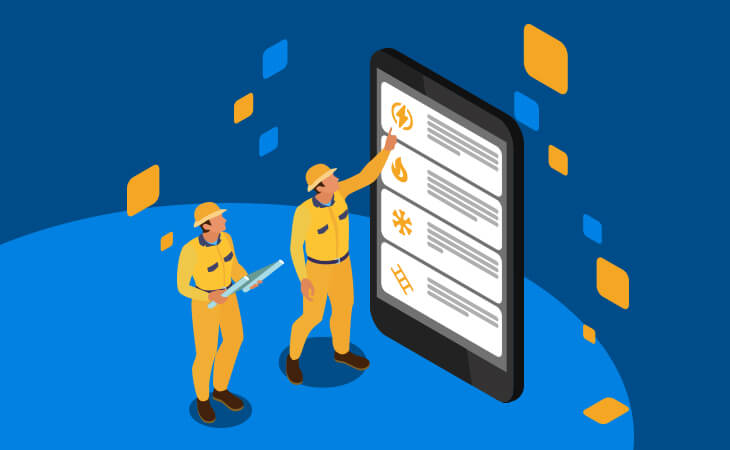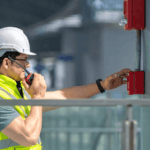
How Technology Is Shaping The Future Of Occupational Health and Safety
Organizations owe it to themselves and to forces of the law to make workplace safety their number one priority. Yet, with so many stringent rules and safety processes in place, as many as 2.3 million people succumb to work-related accidents every year.
For the most part, safety measures were put in place as a counter-measure for a preceded accident. In fact, EHS (Environmental. Health and Safety) as a concept was borne as the aftereffect of 2 major catastrophic incidents, the Seveso Disaster of 1976 and the Bhopal Disaster of 1984.
Can accidents perpetrated by a series of unintentional acts or unforeseen forces be measured and controlled?
Fortunately, with modern innovative safety systems, you can achieve some level of measurable success in controlling accidents.
Following a “prevention is the cure” method, most environmental, health, and safety software systems intelligently decipher the footprints that lead to an accident and act fast on creating a plan to avert a disaster before it strikes.
Moreover, newer releases of innovative safety systems and devices are on the rise, bringing better solutions to monitor, report and capture EHS data – eventually opening possibilities to usher in a Zero-incident workspace.
Enterprises best positioned to drive successful outcomes to their safety process are usually the early adopters of new technological advancements.

Let us further dissect the benefits of integrating technology into your organization’s safety process:
Analyze behavioral shifts to eliminate mishaps at their roots:
Human beings by and large are prone to make mistakes. Our propensity to “err” spurs from a number of inherently natural factors like negligence, overlooking attention to detail, and our brazen over-confident attitude.
With our behavior spiraling away from our prescribed safety bubble, can we be controlled?
Yes, our “devil is in the detail” attitude to respond to facts rather than plain statements is why integrating smart systems that automatically and consistently capture, collate and process facts right in front of us, can be a solution to controlling our behavior.
With so much relevant safety data in the palm of our hands, we are bound to pay heed and adapt our behavior to fall in line with safety protocols.
Then, there are the others, who could care less even if data hit them in the face. With digitized behavior-based incident management software, you can enforce changes on targeted individuals by analyzing their behavioral trends and sending out timely alerts to mend their behavior or by adjusting the process – making it safer.
Keep a constant eye on employee’s safety at work:
Mishaps are impervious to time and space… it can catch you by surprise at just about any time or place.
Unless… your movements and work activities are under constant surveillance with an inner voice echoing constant guidance and alerts to any anomalies that may transpire.
Technology has transcended communication barriers by connecting on-site technicians with safety leaders like never before.
Innovative tools like incident management systems or audit management systems allow people to report incidents or conduct audits using their mobile devices while simultaneously updating data to the central database instantly – ensuring that data is pushed to the right people at the right time in order to take precise corrective actions.
Smart wearable’s like headgear’s attached with augmented reality capabilities, smartwatches, etc, gives an immersive view of on-site activities in real-time.
Field-force management systems like a digitized permit-to-work system along with geo-mapping capabilities give your management a bird’s eye view of the complete cycle of employee activities, from start to finish – allowing you to take actions like revoking or extending a work permit based on a rapid feed of data throughout the hierarchy chain.

Engage Employees to act on intuition rather than persuasion:
Enterprises need to come to terms with the fact that human beings aren’t built to be attentive. Thanks to technology, our attention span has now drastically dropped from 12 seconds to 8 seconds.
Though technology is the inhibitor to improvement on this occasion, yet it can also be the solution to a more observant workspace.
Digitized communications channels like emails, chat, messaging and notifications have become the preferred medium to transmit and retain information for this generation.
Vital data with safety instructions or alerts needs to capture the attention of users almost immediately. That’s why organizations need to seize the opportunity to upgrade to a digitized safety system that is mainstreamed to current user sensitivities and feeds information at forums that best capture their attention.
And it’s not just about the preferred user channel, but the layout of the program interface should also supplement the user’s attention span. An easy-to-navigate, well-crafted design can accentuate the user experience by charting a simple and intuitive user journey.
Conclusion:
Everyone aspires to work in a safe environment. In fact, productivity is at its peak in a workplace where employees are inspired and motivated to cultivate a safe work culture.
With no apparent flip-side; can technology calibrate continuous improvement to your safety culture.
It certainly can, implementing disruptive technologies to take over manual safety processes is the next step to enhancing your safety culture.
With the evolving stature of technology advancement, we might finally be able to foresee incidents, build devices that protect us like never before, go beyond compliance and create a workspace that brings operational excellence and sustainability by putting the well-being of workers as its core value.
Joshua Martyn was a content manager at Safetymint, crafting helpful contents that enlighten readers and EHS professionals alike, about fresh trends, technologies and perspectives from the world of safety.



